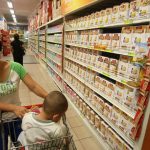
The state received $17 million in drought and wildfire disaster assistance from the federal government, Walz said. And he urged state agriculture officials to work quickly to determine the best way to get that out to affected producers. Specifics around how that funding would roll out to farmers were not yet clear on Friday.
Drought and its impacts pushed livestock farmers to sell off animals at higher rates as hay and grass dried up and feed costs soared. Vegetable farmers have seen crops burn up in hot and dry conditions. And 21 Minnesota dairy farms shuttered last month due to financial hardship.
“I’m afraid we’re going to lose more,” Petersen said. “It’s not a silver bullet but a buckshot-type situation here that’s going to help us get through this.”
Walz and Petersen on Friday solicited advice from farmers around the state about what financial or policy measures could help them stay afloat this year. And during a virtual roundtable discussion, Walz said he planned to call lawmakers back to St. Paul next month to take up a package of support measures that could include assistance transporting feed and water, reviewing tax impacts for livestock sales and sending out aid funding.
Earlier in the week, Walz and top legislative leaders said they’d push for a package of supports for affected producers after visiting Farmfest.
“There is a fierce sense of urgency to get something done now and the idea of telling you you’ll get paid in a couple years, it’s just not going to work,” Walz told farmers during a virtual roundtable discussion. “I’m talking to leadership at the Legislature. We need to get some type of package together, we need to see if there’s something we can do. … It’s not going to save some people but if we do enough combinations of some of these things around the edges we might make it through this year.”
Farmers from around the state said the severe drought conditions had spurred new costs and challenges in sustaining livestock and crops.
Suzanne Vold, a dairy farmer from Glenwood, Minnesota, said the dry conditions were the worst she’s seen in 26 years of farming. And without hay or grass available for her cows to graze, she had to buy more feed, bumping up her costs by 50%.
“Since April 11, we have had three and a half inches of rain, which is insane. And things are drying up daily as we watch,” Vold said. “We’re burning the candle at both ends. We’re trying to produce as much as we need but Mother Nature is not helping us with that this year.”
Rachel Gray runs a cow-calf operation in Blackduck, Minnesota, and she said livestock sales had surged in the area as cattlemen struggled to find and afford enough feed for their herds.
“You choose to either stay in business and try to buy hay that you can’t afford or go out of business,” Gray said.























